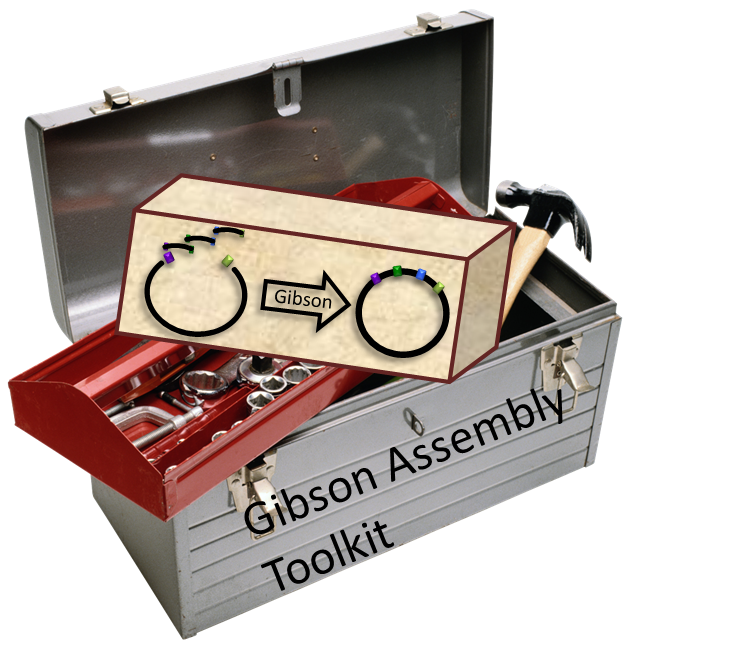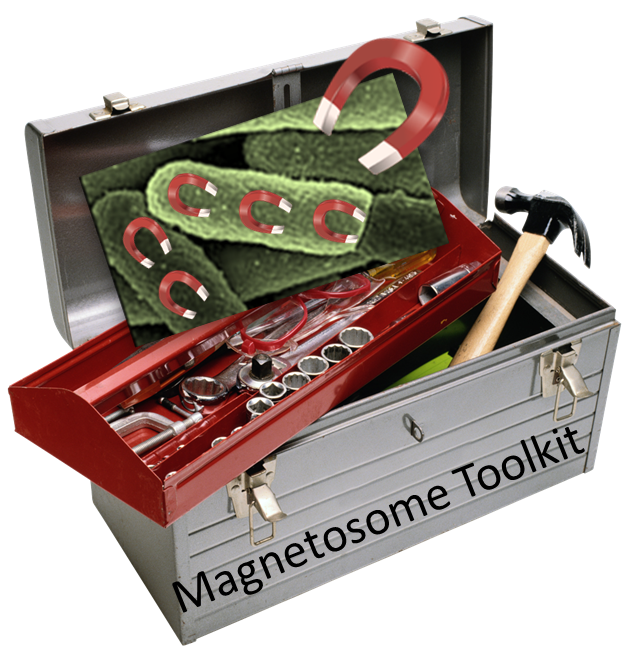Team:Washington/Magnetosomes/Background
From 2011.igem.org
(→Magnetosome Toolkit) |
(→Magnetosome Toolkit) |
||
| Line 24: | Line 24: | ||
='''Magnetosome Toolkit'''= | ='''Magnetosome Toolkit'''= | ||
| - | One amazing thing some bacteria do is to fabricate nano-scale magnets from soluble iron. In order to bring | + | One amazing thing some bacteria do is to fabricate nano-scale magnets from soluble iron. They can use these magnetic particles, aligned in chains, to sense and navigate along the earth's magnetic field. In order to bring these fabrication and sensing capabilities to future iGEM teams, we assembled the [https://2011.igem.org/Team:Washington/Magnetosomes/Magnet_Toolkit Magnetosome Toolkit]: a set of 18 genes from the essential <i>mamAB</i> operon of <i>Magnetospirillum magneticum</i> strain AMB-1. We extracted these genes from AMB-1, and used our pGA vectors to efficiently sequence verify BioBrick constructs of all 18 genes. We have also begun to characterize the genes, with some exciting results. The ultimate goal of this toolkit is to enable future iGEM teams to generate '''ferriColi''': magnetic ''E. coli''. |
[[File:Igem2011 MagnetToolkit.png|left|300px|link=https://2011.igem.org/Team:Washington/Magnetosomes/Magnet_Toolkit]] | [[File:Igem2011 MagnetToolkit.png|left|300px|link=https://2011.igem.org/Team:Washington/Magnetosomes/Magnet_Toolkit]] | ||
Revision as of 18:01, 27 September 2011
As with the expansion of the iGEM competition, many iGEM teams have started to investigate the possibility of working with large-scale genomes. Large-scale gene manipulation often requires the use of tools which allow multiple gene inserts as to bring the cloning project from single gene level to a multiple gene level. However, the current BioBrick standard vectors available through iGEM are not designed for multiple-insert cloning. Therefore, the UW iGEM team decided to research methods to improve cloning efficiency and as a result, two "toolkits" were submitted to the registry.
Gibson Assembly Toolkit
To expand on work started by the 2010 UW IGEM team, this year we developed and submitted a set of plasmid backbones for BioBricks that are optimized for Gibson assembly. Based on the bglBrick standard [http://dspace.mit.edu/bitstream/handle/1721.1/46747/BBFRFC21.pdf?sequence=1 RFC 21], these pGA - plasmids for Gibson Assembly - vectors comprise the Gibson Assembly Toolkit. These vectors have much higher cloning efficiencies than the equivalent pSB vector and are fully compliant with BioBrick [http://www.synbio.org.uk/gibson/downloads/files/RFC57.pdf RFC 57] developed by the 2010 Cambridge iGEM team.
- What's in the Gibson Assembly Toolkit?
Five plasmid backbones for high-efficiency, multiple-fragment assemblies.
- 2 high copy vectors for gene extraction and cloning: pGA1A3, pGA1C3
- 1 medium copy expression vector: pGA3K3
- 2 low copy expression vectors: pGA4A5, pGA4C5
Magnetosome Toolkit
One amazing thing some bacteria do is to fabricate nano-scale magnets from soluble iron. They can use these magnetic particles, aligned in chains, to sense and navigate along the earth's magnetic field. In order to bring these fabrication and sensing capabilities to future iGEM teams, we assembled the Magnetosome Toolkit: a set of 18 genes from the essential mamAB operon of Magnetospirillum magneticum strain AMB-1. We extracted these genes from AMB-1, and used our pGA vectors to efficiently sequence verify BioBrick constructs of all 18 genes. We have also begun to characterize the genes, with some exciting results. The ultimate goal of this toolkit is to enable future iGEM teams to generate ferriColi: magnetic E. coli.
What’s in the Magnetosome Toolkit?
- A set of gene clusters from the essential mamAB operon from strain AMB-1
- Our favorite genes as translational fusions with superfolder gfp in pGA vectors
- A table compiling individual gene functions from our literature search
 "
"




